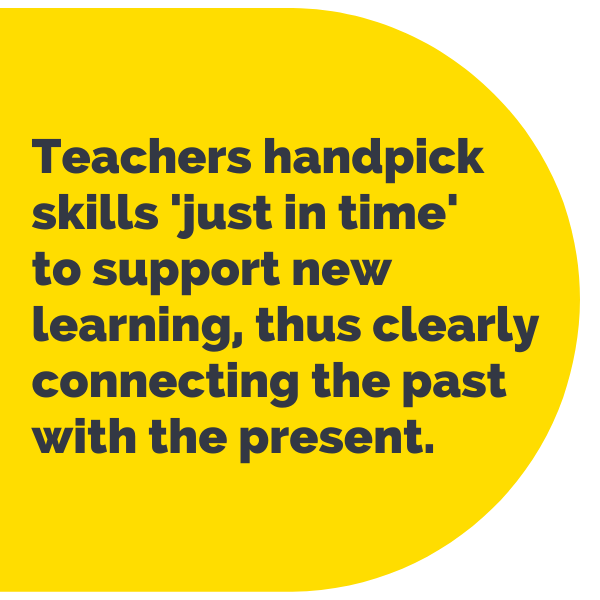In the June 30th Uncommon Sense post, 我们扭转 COVID 相关学习损失的计划, we named small-group instruction focused on accelerating student learning as a key driver in our ability to close COVID-related learning loss by June 2022. In this post, we are going to look closely at the classroom of Equel Easterling to see how he is bringing this small group acceleration to life with his students.
Equel is a 5th grade math teacher at 北星学院克林顿山中学 North Star Academy Clinton Hill Middle School who knows what it takes to be a successful teacher and student. Equel’s students outperformed non-economically disadvantaged students on the NJSLA on the last state assessment. And not that long ago, Equel sat in the very same seats that his students do as a graduate of North Star Academy’s Clinton Hill Middle School who went on to graduate from Morehouse College.
Stepping into Equel’s classroom, you find 28 of his students deeply engaged with division story problems on a computer-based platform that responds to their work. This platform provides scaffolds when necessary, and extends and affirms student learning when successful. These students are engaged with on-grade level content, largely aligned to 5.NBT.6 (performing division with multi-digit whole numbers).
Equel Easterling implements “just in time” learning with his students.
At a U-shaped table in the back of the classroom, Equel is supporting four students who need support with 2.OA.1 (solving one- and two-step word problems using addition, subtraction, and whole numbers). The students are being prompted in their ability to analyze the knowns and unknowns, and the actions and relationships in the story problem. Students leverage this resource that captures all of the potential actions and relationships within story problems as they determine their pathway to a solution.

Equel has been strategic in selecting this math standard for students to work on as it engages students in the “just in time” skills and concepts that will support new, on-grade level learning (in this case 5.NF.2—solving word problems involving addition and subtraction of fractions).
As Cathy Martin names in Accelerating Unfinished Learning, “By addressing incomplete understandings in the context of new grade-level learning…teachers handpick skills or concepts ‘just in time’ to support the new learning, thus clearly connecting the past with the present.”
If students are able to correctly identify the knowns, unknowns, and the actions or relationships in a story problem with whole numbers, they will be primed to apply their learning to these types of problems with fractions. Ultimately, when these four students engage with 5.NF.2, their attention will be on the 5th grade fraction work as they will have already grappled with the nuances of problem solving from 2nd grade.
Preparing for “Just in Time” Small-Group Instruction
Here are the steps Equel uses for preparing for “just in time” small-group instruction that you can use in your own classroom:
- Gather Data: Equel leverages exit tickets, quiz data, and interim assessment data to make decisions about what instruction students need to receive in order to quickly transition to on-grade level content.
- Know the Standards: Equel uses the 5th grade scope and sequence, and the Uncommon Schools Math Content Guide to determine what he must immediately prepare students to begin learning. Additionally, Equel references the Common Core Standards for key skills and concepts that may be well-below grade level (more than one grade level below).
- Connect Where Your Students Are to Where They Are Going: Based on where Equel knows students must go with 5th grade content, he mines the data to see what “just in time” skills students have not yet mastered, but will need in order to access the 5th grade content.
- Create a Plan: Using a planning grid like 此, Equel plans for those small-group instructional moments to address those “just in time” skills to serve as an on-ramp in the days and weeks leading up to new on-grade level content.
In this 20-30 minute small-group instructional block, Equel masterfully works to prepare students for on-grade level learning. Although he returns to previous grade level’s content, he does so only to create an entry point to on-grade level content. This primes the pump for students to fully engage with the standards at their grade level so that learning loss does not multiply by focusing only on below-grade level content. By focusing on acceleration versus remediation as Equel has done so masterfully, we are confident we will be able to achieve our goal of closing COVID-related learning gaps in a single school year.
点击以下链接获取上述所有资源的 PDF 文件:
- Just in Time Learning Concept Keys
- Uncommon Schools Math Content Guide
- Small-Group Instruction Planning Grid
相关职位:







